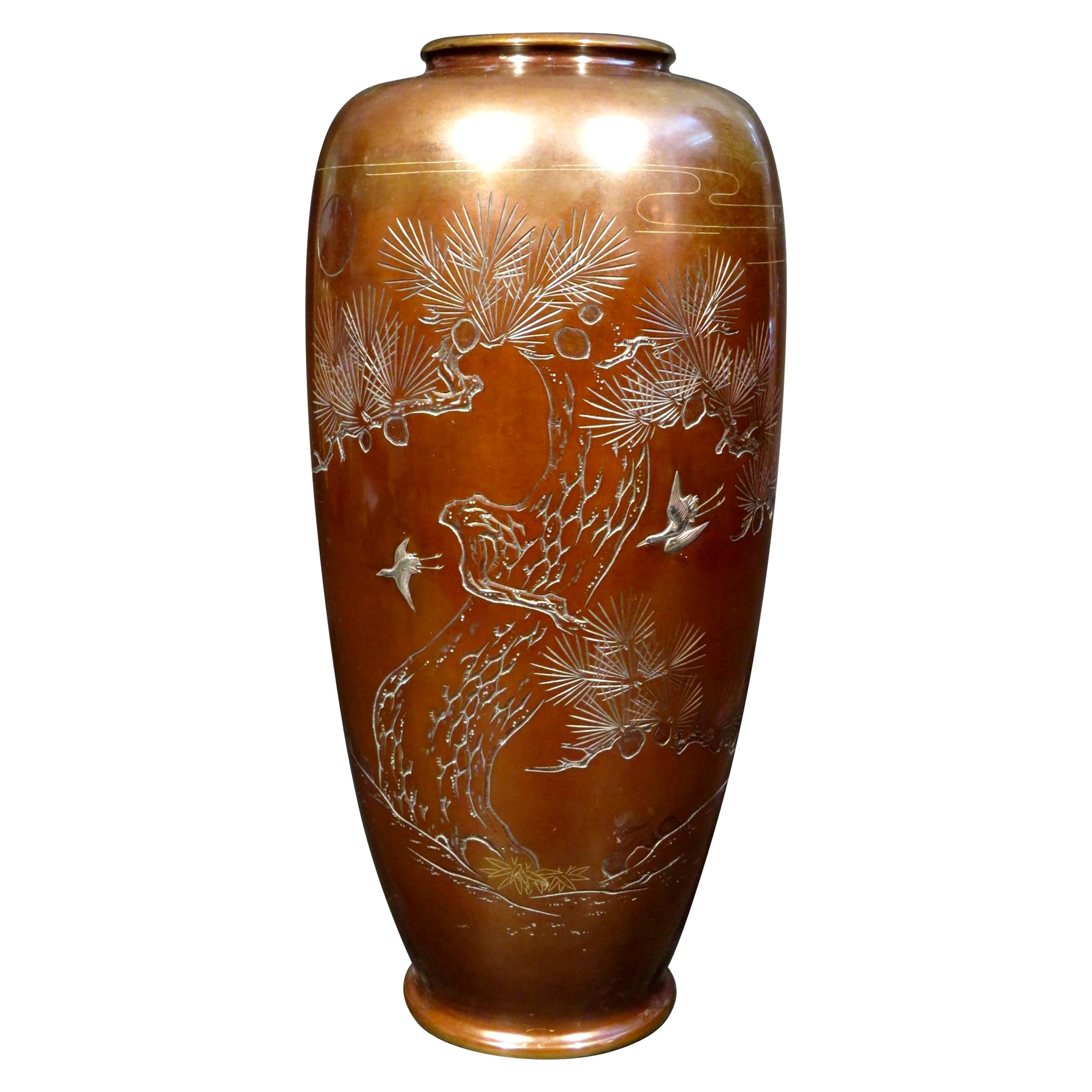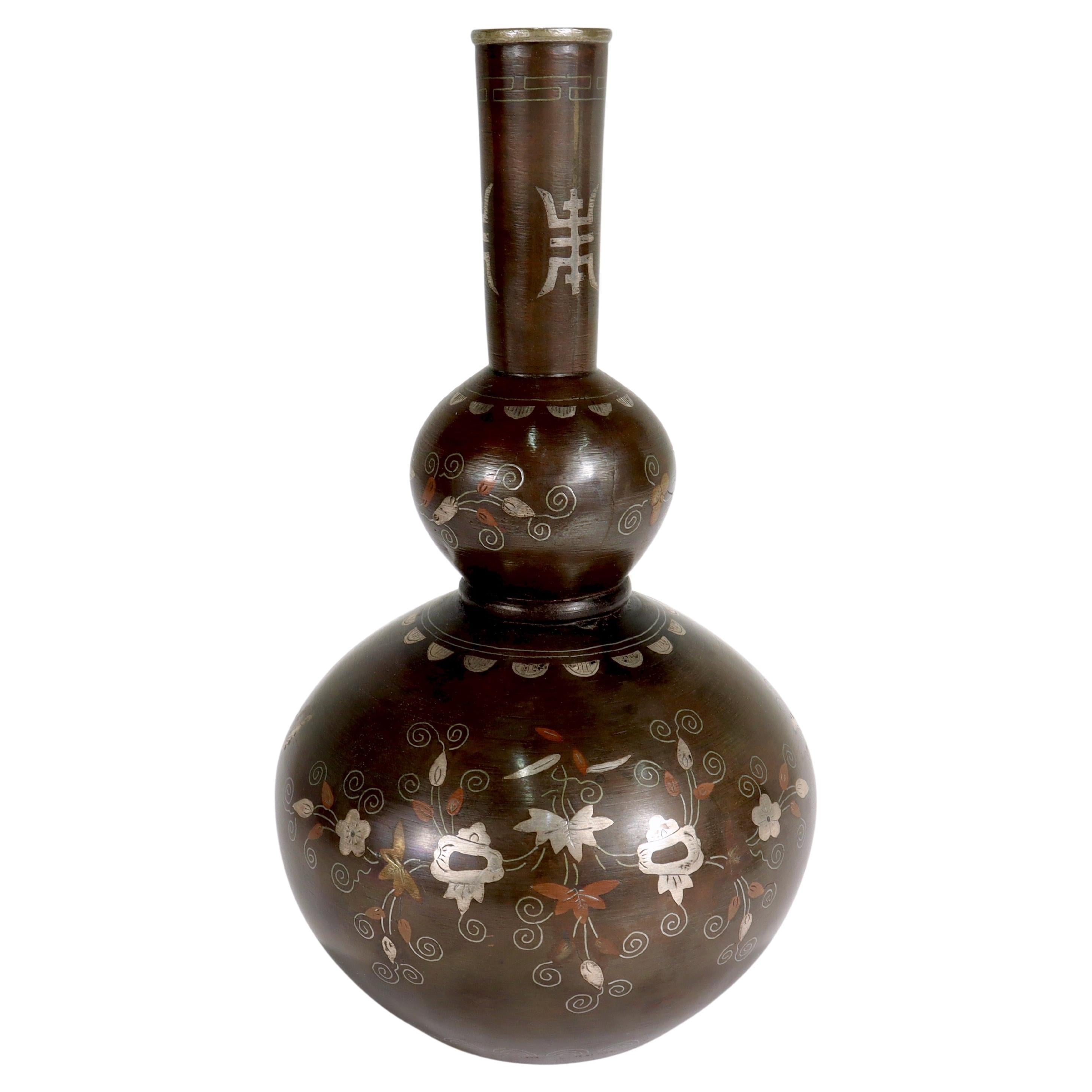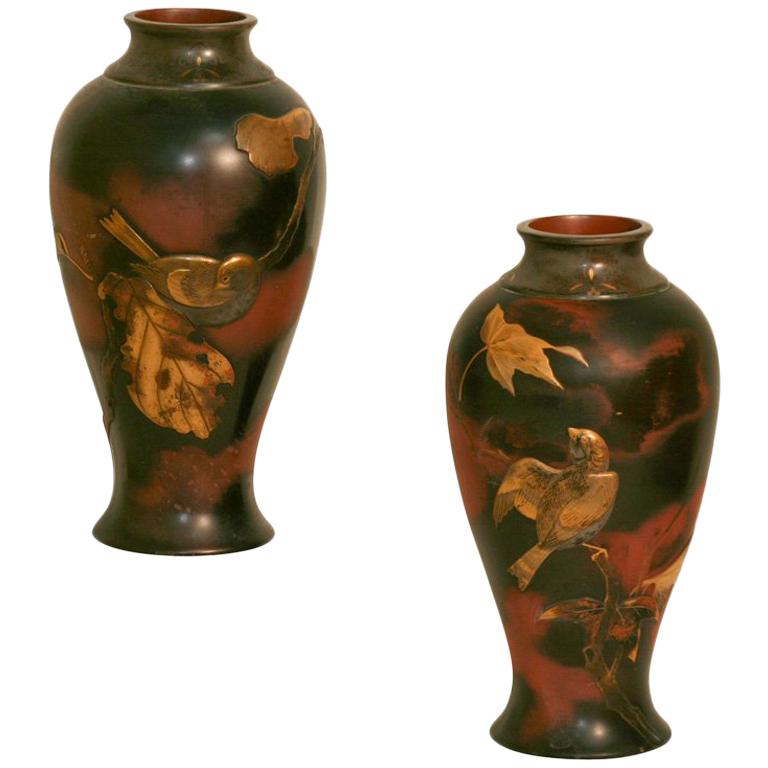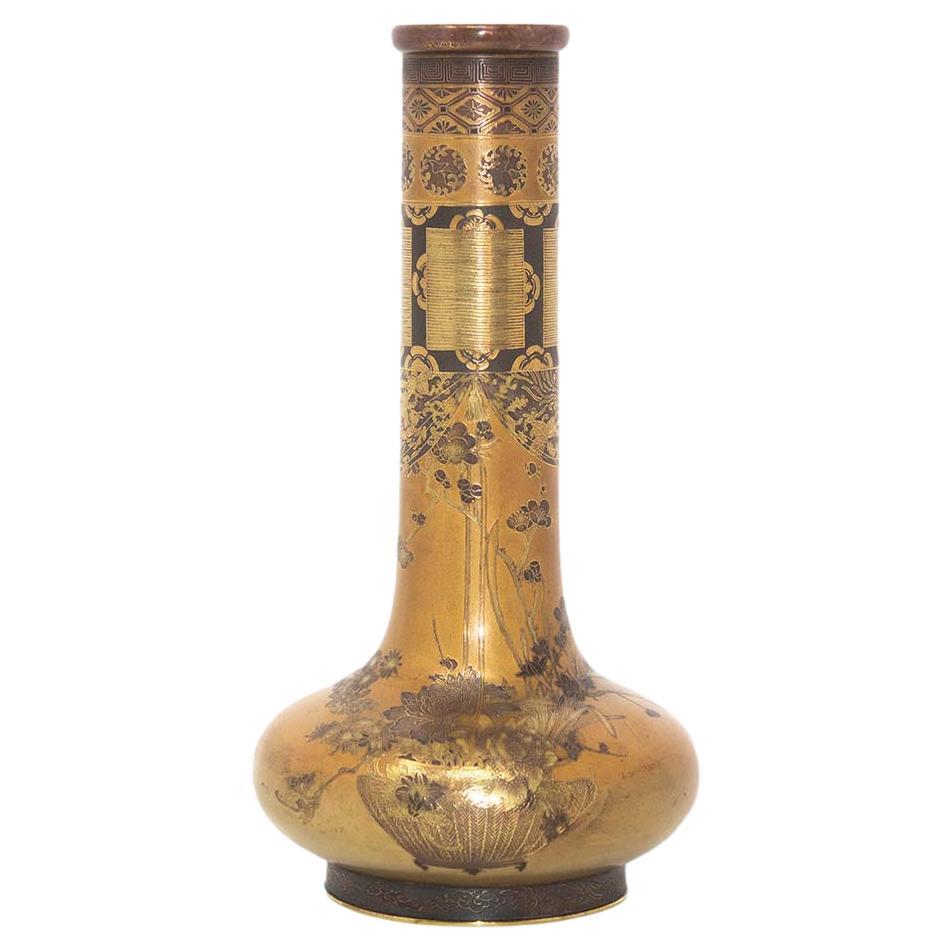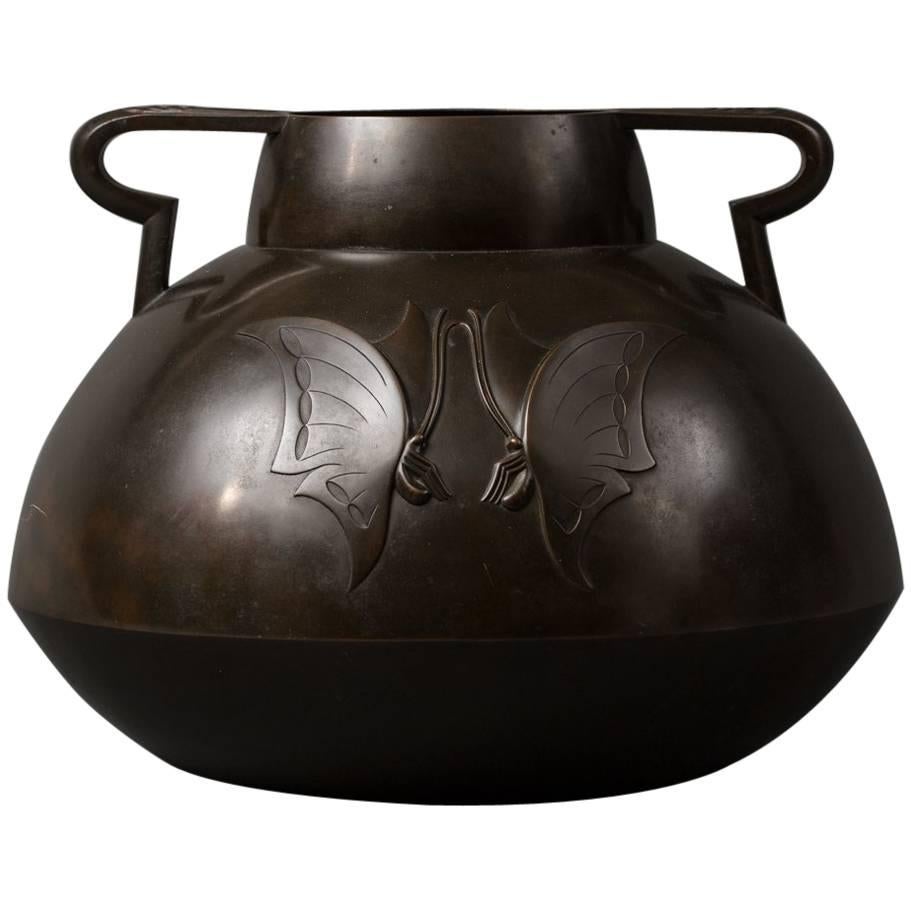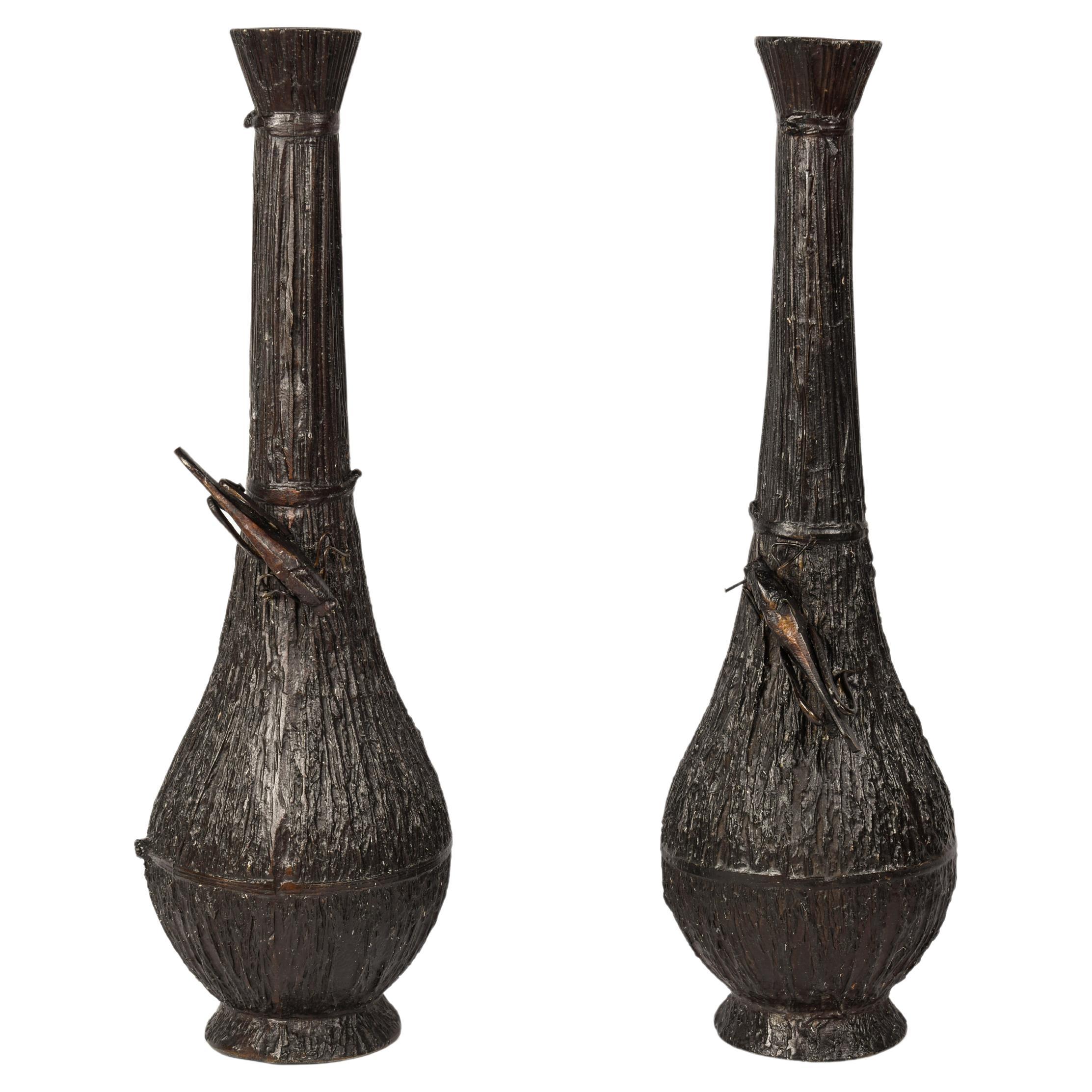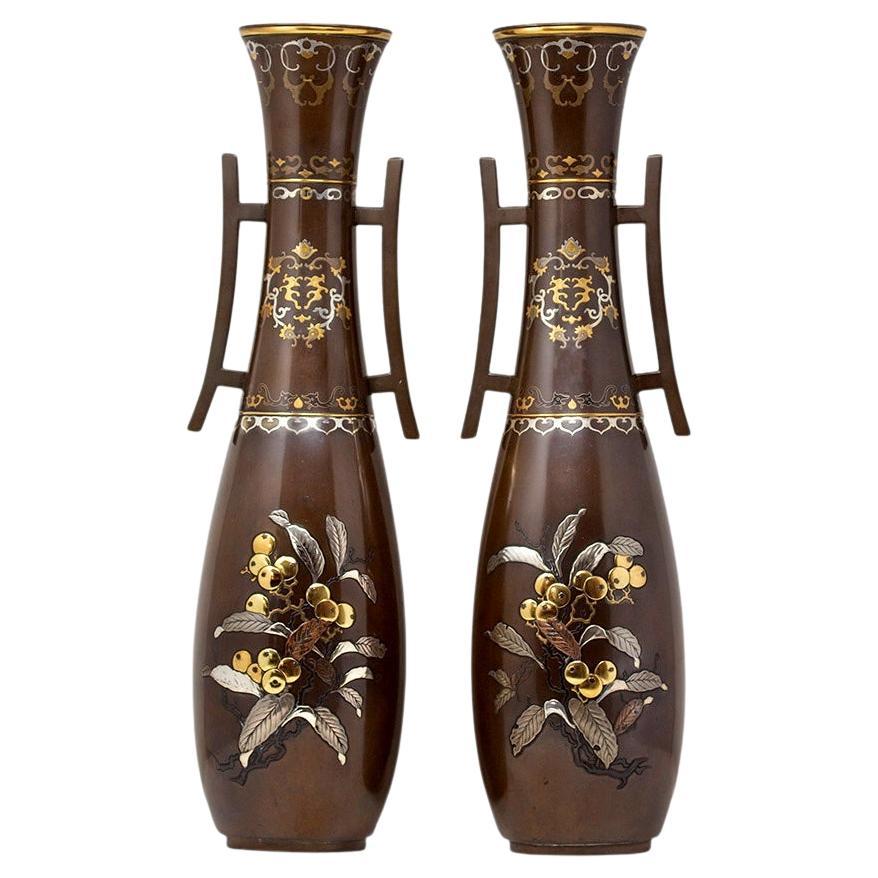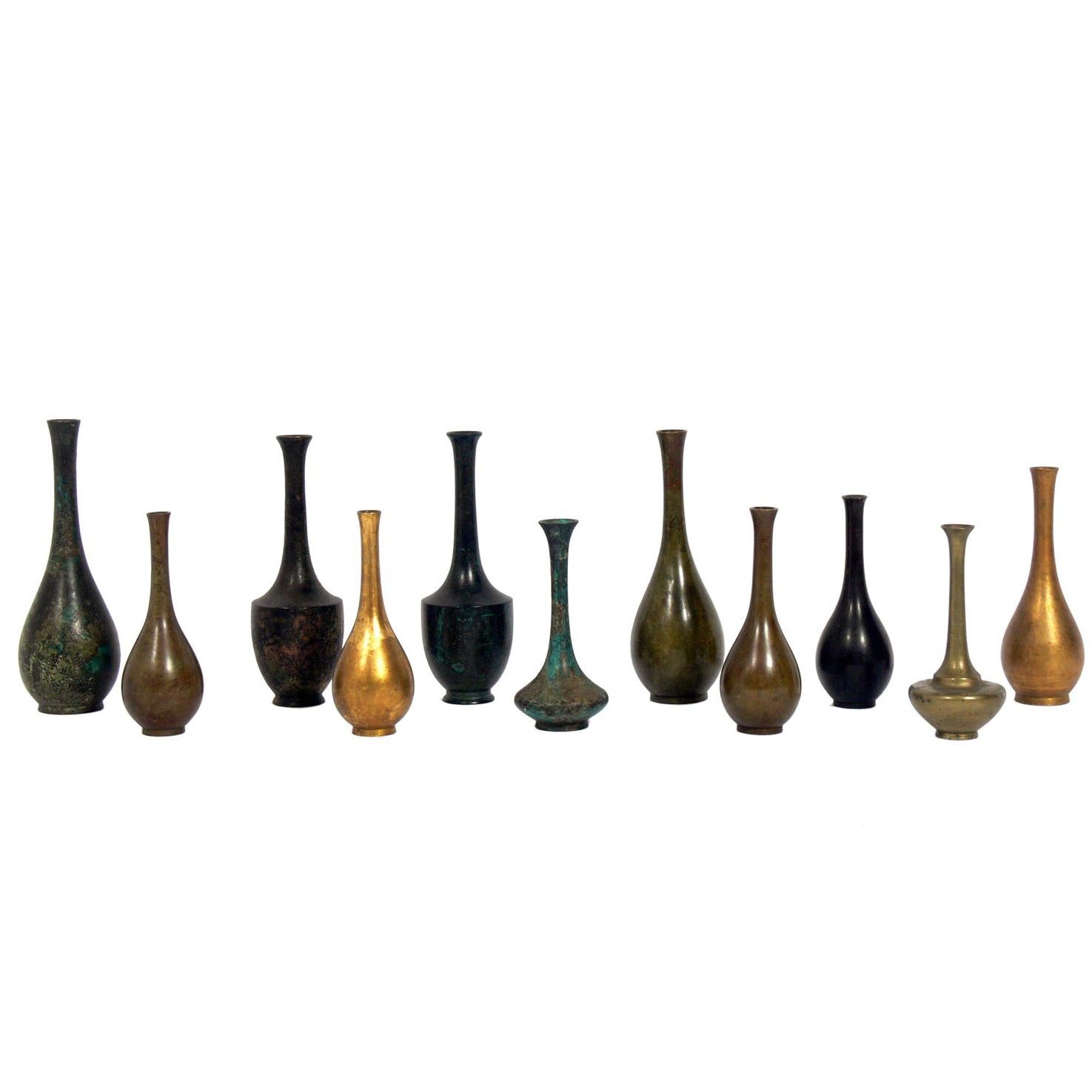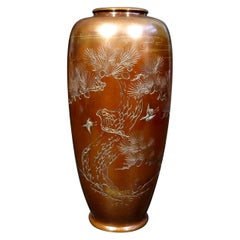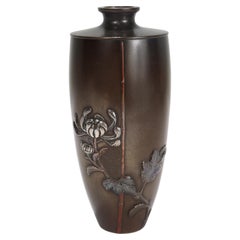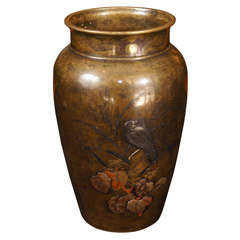
Japanese Mixed Metal Bronze Vase
View Similar Items
1 of 7
Japanese Mixed Metal Bronze Vase
About the Item
- Dimensions:Height: 9.75 in (24.77 cm)Diameter: 6 in (15.24 cm)
- Materials and Techniques:
- Place of Origin:
- Period:
- Date of Manufacture:19th Century
- Condition:Very good.
- Seller Location:Hudson, NY
- Reference Number:Seller: as132211stDibs: 12041880431264
You May Also Like
- Very Fine & Large Japanese Bronze & Mixed Metal Vase, Meiji PeriodLocated in Ottawa, OntarioA large and very fine Meiji Period (1868-1912) patinated and mixed metal bronze vase of ovoid form, richly decorated with raised motifs of flying cranes accented with silver-overlay,...Category
Early 20th Century Japanese Meiji Metalwork
MaterialsSilver, Bronze
- Antique Signed Japanese Bronze Mixed Metals Butterbur Vase by Atsuyoshi / InoueLocated in Philadelphia, PAA fine signed antique Japanese Meiji period mixed metals vase. By Miyabe Atsuyoshi for Inoue of Kyoto. With a bronze body and d...Category
Early 20th Century Japanese Meiji Metalwork
MaterialsSilver, Bronze, Copper, Gold
- Antique Signed Japanese Meiji Period Mixed Metals Bronze Double Gourd Form VaseLocated in Philadelphia, PAA fine antique Japanese bronze vase. From the Meiji Period. With copper and silver floral and vine and butterfly inlay as well a kanji symbol to the neck (possibly a stylized f...Category
Early 20th Century Japanese Meiji Vases
MaterialsSilver, Copper, Bronze
- Pair of 19th Century Japanese Aesthetic Movement Mixed Metal Bronze VasesLocated in Great Barrington, MAThis beautifully paired set of Aesthetic Movement Japanese bronze vases are decorated all around the body featuring birds and foliage. The ...Category
Antique 19th Century Japanese Aesthetic Movement Metalwork
MaterialsBronze
- Antique Japanese Mixed Metals Copper & Silver Usubata Ikebana Flower VaseLocated in Philadelphia, PAA fine antique Japanese flower vase. In hand-hammered copper (or possibly a thin-bodied bronze) with applied silver bands to rim, footrim, shaped edge, and with a lotus petal border at the joint of neck and body. Having the usubata form with a wide flared neck and mouth. The 'usubata' vase is a form favored for large scale floral arrangements by the Ikenobo school, the oldest and largest school of Japanese ikebana founded in the 15th century by Buddhist monk Senno Ikenobo. It is believed that the wide and shallow rim of an usubata vase which displays the surface of the water best imitates natural conditions of growth while also contributing to the longevity of an arrangement with the increased surface area of the water better oxygenating the plants. The base retains still retains hand-hammered marks. There is evidence of seams and folds throughout from the construction, and the surface has a cloud-like brown patina throughout. Simply a wonderful Japanese mixed metal vase...Category
Antique Late 19th Century Japanese Meiji Vases
MaterialsCopper, Silver
- Large Japanese Tokyo Bronze VaseLocated in Hudson, NYThis large and impressive cast bronze vase is of a type called Tokyo bronzes. It displays elements both of Japanese and Chinese iconography and is not onl...Category
Antique 19th Century Japanese Metalwork
MaterialsBronze
Recently Viewed
View AllMore Ways To Browse
Japanese Mixed Metal Vase
Bronze Vase Japan Edo
Edo Bronze Vase
Edo Period Japanese Bronze Vase
Bronze Incense Burner Censer
Japan Water Kettle
Cloisonne Marks Chinese
Cast Iron Kettle Used
Japanese Bronze Turtle
Cast Iron Kettle
Asian Cloisonne Bowl
Dome Top Asian
Persian Hammered Brass
Islamic Mughal Antiques
Bronze Kettle
Antique Bronze Incense Burner
Arabic Coffee
Cast Iron Kettle Antique
